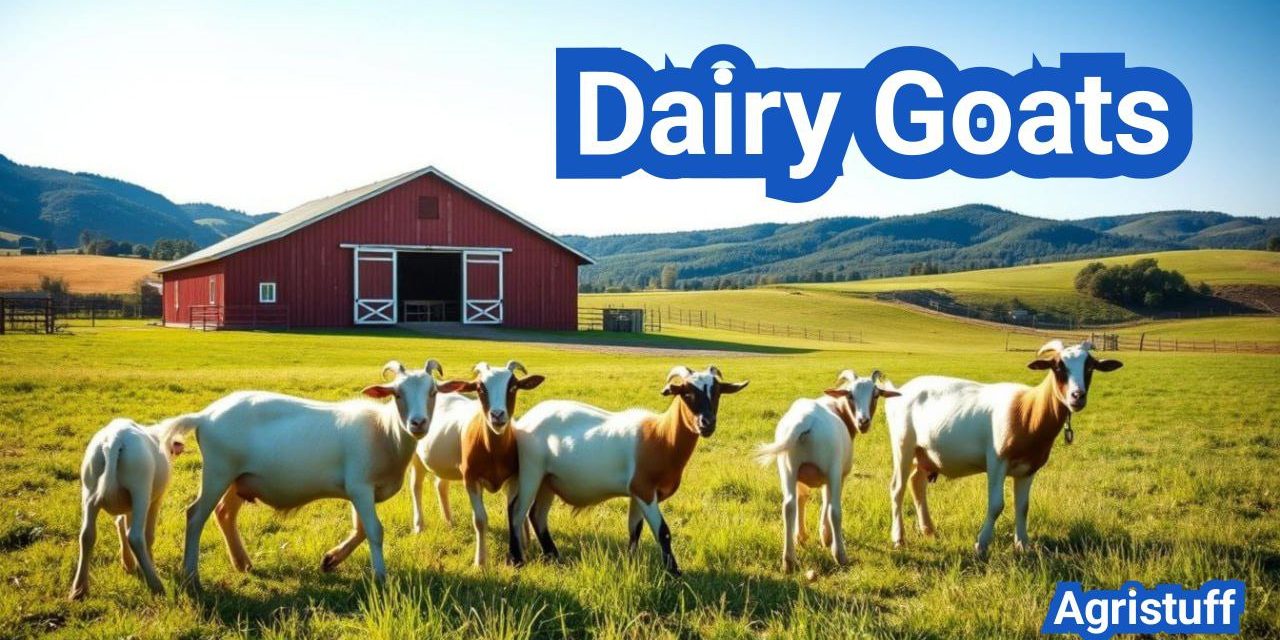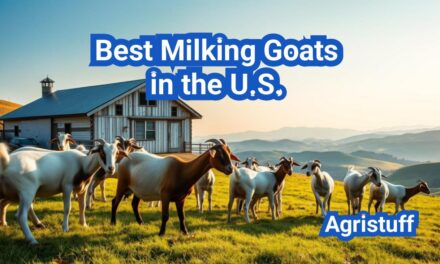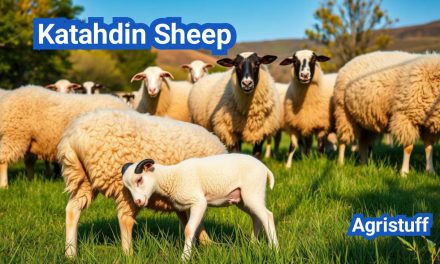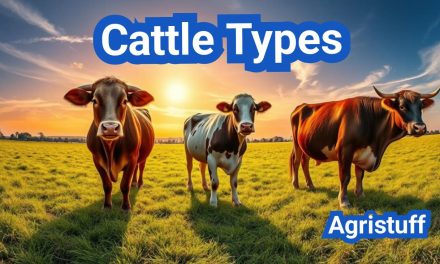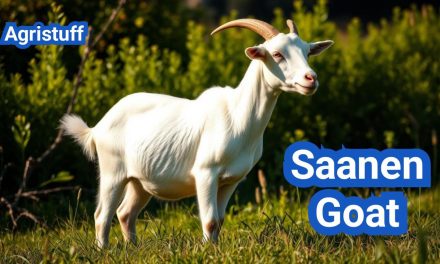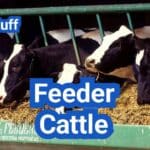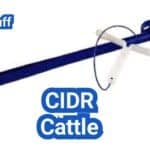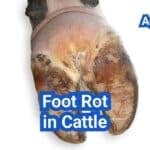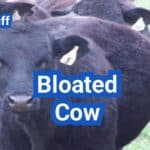Sustainable goat farming is gaining popularity due to its numerous benefits, including low space requirements and high milk production. For those interested in small-scale dairy farming, dairy goats are an excellent choice.
Dairy goat farming offers a unique opportunity for farmers to diversify their products and income streams. With the right breed and milking techniques, farmers can achieve high milk yields and improve their overall farm productivity.
Key Takeaways
- Benefits of dairy goats farming for small-scale dairy production
- Top breeds suitable for dairy goat farming
- Effective milking tips for improved milk production
- Importance of sustainable practices in goat farming
- Key considerations for choosing the right dairy goat breed
Understanding Dairy Goats
The history and development of dairy goat farming in the United States are closely tied to the introduction of various dairy goat breeds. These breeds have been selected and bred for their high milk production capabilities, making them an essential part of small-scale dairy farming operations.
What Makes a Goat a Dairy Goat
Dairy goats are characterized by their ability to produce high quantities of milk. The primary dairy goat breeds in the USA include Alpine, Saanen, LaMancha, and Nubian goats, each known for their unique characteristics and milk production levels. Goat milk production is not only a significant aspect of dairy goat farming but also offers a nutritious alternative to cow milk.
The History of Dairy Goat Farming in the USA
Dairy goat history in the USA dates back to the early colonial period when the first dairy goats were introduced. Over time, USA dairy goat farming evolved, with various breeds being imported to improve milk production and adapt to different climates. Today, dairy goat farming is a thriving industry, with many farmers opting for dairy goats due to their relatively low maintenance requirements and the high demand for goat milk products.
The development of dairy goat farming in the USA has been influenced by the introduction of new breeds and advancements in farming practices. As a result, the industry has become more diverse, with a range of dairy goat breeds being raised across different regions.
Benefits of Raising Dairy Goats

Dairy goat farming is becoming increasingly popular due to its numerous benefits, including economic, sustainability, and lifestyle advantages. Raising dairy goats can provide a steady income, contribute to a sustainable lifestyle, and serve as a fulfilling family activity.
Economic Advantages
One of the primary economic advantages of dairy goat farming is the potential for income through milk sales. Dairy goats can produce a significant amount of milk, which can be sold to consumers, used to make dairy products like cheese and butter, or consumed within the family. The demand for goat milk and its products is on the rise due to their nutritional benefits and perceived health advantages over cow milk.
Income diversification is another economic benefit. By incorporating dairy goats into a farming operation, farmers can diversify their income streams, reducing dependence on a single crop or livestock product. This diversification can help stabilize farm income and improve overall economic resilience.
Sustainability Benefits
Dairy goats are considered a sustainable livestock option for several reasons. They require less land and resources compared to larger livestock, making them suitable for small-scale or hobby farming. Their relatively low environmental impact is due in part to their efficient conversion of feed into milk and their ability to thrive on a variety of feed sources, including pasture and browse.
The manure from dairy goats is also a valuable resource, serving as a natural fertilizer that can improve soil health and fertility. This aspect of dairy goat farming contributes to a more closed-loop farming system, where waste is minimized and resources are used more efficiently.
Family and Lifestyle Considerations
Raising dairy goats can be a rewarding family activity that promotes a lifestyle connected to nature and self-sufficiency. It involves the whole family in the care and management of the goats, teaching children valuable skills about animal husbandry, responsibility, and the source of their food.
The lifestyle benefits also extend to the personal satisfaction of producing one’s own food and the potential for a healthier diet through the consumption of fresh, wholesome dairy products. For many, the joy of working with animals and being part of a farming community adds to the overall quality of life.
Top Dairy Goat Breeds in the USA
Among the numerous dairy goat breeds found in the USA, Alpine, Saanen, LaMancha, and Nubian are recognized for their outstanding dairy production capabilities. These breeds have been favored by dairy farmers due to their high milk yield, adaptability, and other desirable traits.
Alpine Goats
Alpine goats are a popular choice among dairy farmers in the USA due to their high milk production and adaptability to various climates. Originating from the French Alps, these goats are known for their robust health and ability to thrive in different environments. Alpine goats produce a significant amount of milk, making them an ideal choice for large-scale dairy operations.
Saanen Goats
Saanen goats, originating from Switzerland, are another highly regarded breed in the USA. They are known for their exceptional milk production and calm temperament, making them suitable for dairy farming. Saanen goats are often praised for their ability to produce high-quality milk with a high butterfat content.
LaMancha Goats
LaMancha goats are a unique breed, easily identifiable by their distinctive earless or very short-eared trait. They are prized for their high milk production and docile nature. LaMancha goats are a popular choice for dairy farmers due to their ease of handling and high-quality milk.
Nubian Goats
Nubian goats are known for their rich milk production and distinctive appearance, characterized by their long, drooping ears. They are a versatile breed, suitable for both small and large dairy operations. Nubian goats are favored for their high butterfat milk content, making them ideal for producing cheese and other dairy products.
In conclusion, the top dairy goat breeds in the USA, including Alpine, Saanen, LaMancha, and Nubian goats, offer a range of benefits for dairy farmers. Their high milk production, adaptability, and other desirable traits make them well-suited for the demands of dairy farming.
Lesser-Known Dairy Goat Breeds

Beyond the well-known dairy goat breeds, there are several lesser-known breeds that offer unique advantages for dairy production. These breeds can provide farmers with alternative options that might better suit their specific needs, whether it’s related to climate, milk production, or other factors.
Oberhasli Goats
The Oberhasli goat is a breed that stands out for its striking appearance and robust milk production. Originating from Switzerland, Oberhasli goats are known for their rich milk, which is ideal for cheese production. They are also recognized for their hardiness and ability to adapt to various climates, making them a versatile choice for dairy farmers.
Nigerian Dwarf Goats
Nigerian Dwarf goats are another lesser-known breed that is gaining popularity for their dairy production. Despite their small size, they produce a significant amount of milk relative to their body size. Nigerian Dwarf goats are also known for their high butterfat content in their milk, making it ideal for producing cheese and butter. Their small size also makes them a good choice for smaller farms or homesteads.
British Alpine Goats
British Alpine goats are a breed that is closely related to the Alpine breed but has been developed specifically in the UK. They are known for their high milk production and are often used in crossbreeding programs to improve milk yield in other breeds. British Alpine goats are also recognized for their docile nature, making them easier to handle for farmers, especially those who are new to dairy goat farming.
These lesser-known dairy goat breeds offer a range of benefits and characteristics that can cater to different dairy farming needs. By considering these breeds, farmers can make more informed decisions about which goats to raise for their dairy production.
Choosing the Right Dairy Goat Breed for Beginners
Beginners in dairy goat farming need to consider several factors when choosing a breed. The decision depends on various elements including climate, available space, and the desired level of milk production. Understanding these factors is crucial for making an informed decision.
Climate Considerations
The climate in your area plays a significant role in determining the most suitable dairy goat breed. Some breeds are more tolerant of heat, while others prefer cooler climates.
- Hot Climates: Breeds like Nubian and LaMancha are known for their heat tolerance, making them ideal for warmer regions.
- Cool Climates: Alpine and Saanen goats are more suited to cooler climates, thriving in regions with mild summers and cold winters.
Space Requirements
The amount of space available on your farm is another critical factor. Dairy goats require adequate space for grazing and exercise.
| Breed | Space Requirement | Milk Production |
|---|---|---|
| Nubian | High | Moderate |
| LaMancha | Moderate | High |
| Alpine | High | High |
Milk Production Goals
Your milk production goals will also influence the breed you choose. Some breeds are renowned for their high milk production, while others may offer richer milk with higher butterfat content.
- High Milk Production: Breeds like Alpine and LaMancha are known for their high milk yield.
- Rich Milk: Nubian goats are prized for their milk’s high butterfat content, ideal for cheese production.
By considering these factors, beginners can make an informed decision when choosing a dairy goat breed that suits their needs and resources.
Getting Started with Dairy Goats: Essential Setup

A well-planned setup is the foundation of a successful dairy goat farm. Setting up a dairy goat farm involves several critical components, including appropriate housing, secure fencing, and understanding the initial investment required.
Housing and Shelter Requirements
Providing adequate housing and shelter is crucial for the health and productivity of dairy goats. The shelter should protect the goats from extreme weather conditions and predators.
- Ensure adequate ventilation to prevent respiratory issues.
- Provide enough space for the goats to move comfortably.
- Use bedding materials like straw or sand to keep the area clean and dry.
Fencing and Containment
Secure fencing is essential to contain the goats and protect them from predators. The fencing should be at least 5 feet tall and made of durable materials.
Key considerations for fencing:
- Use materials like wood, metal, or a combination of both.
- Ensure the fencing is sturdy enough to withstand the goats’ attempts to escape.
- Bury the fencing material at least 12 inches underground to prevent digging.
Initial Investment Costs
Understanding the initial investment costs is vital for planning a dairy goat farm. The costs include purchasing the goats, building or renovating housing, and fencing.
| Item | Cost Range | Description |
|---|---|---|
| Dairy Goats | $100-$300 per goat | Purchasing initial stock of dairy goats. |
| Housing | $500-$2000 | Building or renovating shelter for goats. |
| Fencing | $3-$5 per linear foot | Securing the farm perimeter. |
By carefully planning the essential setup, including housing, fencing, and initial investment, you can establish a thriving dairy goat farm.
Dairy Goat Nutrition and Feeding Schedule

To ensure optimal health and milk production, dairy goats need a carefully planned feeding schedule. A well-balanced diet is crucial for maintaining their overall health and maximizing milk production.
Nutritional Requirements
Dairy goats have specific nutritional requirements that must be met to ensure their health and productivity. These requirements include a mix of proteins, carbohydrates, fats, vitamins, and minerals. A balanced diet typically consists of high-quality hay, grains, and minerals. The quality and quantity of feed can significantly impact milk production and overall health.
A general guideline for dairy goat nutrition is as follows:
| Nutrient | Recommended Amount |
|---|---|
| Crude Protein | 16-18% |
| Crude Fiber | 18-20% |
| Calcium | 0.8-1.0% |
| Phosphorus | 0.4-0.6% |
Creating an Effective Feeding Schedule
Developing a feeding schedule that meets the nutritional needs of dairy goats is essential. The schedule should include a consistent supply of fresh water, high-quality hay, and appropriate grains. It’s also important to monitor the goats’ health and adjust the feeding schedule as necessary.
A typical feeding schedule for dairy goats might include:
- Morning: High-quality hay and grains
- Afternoon: Additional grains or concentrates
- Evening: Hay and minerals
Supplements for Optimal Milk Production
In addition to a balanced diet, supplements can be used to enhance milk production. Common supplements include vitamins, minerals, and probiotics. These supplements can help address any nutritional deficiencies and support overall health.
By understanding the nutritional needs of dairy goats and implementing an effective feeding schedule, farmers can optimize milk production and ensure the overall health of their goats.
Breeding and Reproduction of Dairy Goats

Effective dairy goat breeding and reproduction strategies are essential for maintaining a healthy and productive herd. Dairy goat breeding involves a series of complex processes that require careful planning and management to ensure the sustainability of the dairy farm.
Breeding Season and Heat Detection
The breeding season for dairy goats typically occurs in the fall, although some breeds may breed year-round. Detecting heat in does is crucial for successful breeding. Does usually come into heat every 18-24 days, and this cycle can last between 24 to 36 hours. Accurate heat detection is vital to determine the optimal breeding time.
- Observe does for signs of heat, such as restlessness, vocalization, and discharge.
- Use a teaser buck to detect heat, as they can identify receptive does.
- Record the date and duration of heat to plan breeding.
Pregnancy and Kidding
Once bred, does have a gestation period of approximately 150 days. Proper care during pregnancy is crucial for the health of both the doe and the kids. Nutrition plays a significant role, with an emphasis on high-quality feed and adequate nutrition to support fetal development.
As kidding approaches, prepare a clean and safe environment. Kidding can be a challenging process, and assistance may be necessary. Monitoring the doe closely during this period is essential to ensure a smooth delivery.
“A well-planned breeding program is the backbone of a successful dairy goat operation, ensuring the production of healthy kids and maintaining the overall health of the herd.”
Raising Kids for Dairy Production
Raising kids for dairy production involves providing them with optimal nutrition, healthcare, and management practices from birth. Kids are typically weaned after 8-10 weeks, and their diet is gradually transitioned to solid foods.
Proper kid management includes regular vaccinations, parasite control, and monitoring growth rates. Selecting kids with potential for dairy production involves evaluating their lineage, health, and growth performance.
By focusing on these aspects, dairy goat farmers can improve the productivity and sustainability of their operations, ensuring a thriving dairy herd for years to come.
Milking Equipment for Goats

Dairy goat farmers rely on a range of milking equipment, from traditional hand milking tools to advanced mechanical milking systems. The choice of equipment can significantly impact milk quality, goat health, and overall farm efficiency.
Hand Milking Tools
Hand milking is a traditional method that requires minimal investment in equipment. Essential hand milking tools include a milking stool, milking pail, and teat dip. These tools help in maintaining hygiene and making the milking process more efficient.
Benefits of Hand Milking:
- Low initial investment
- Portable and easy to clean
- Direct contact allows for detection of any udder issues
Mechanical Milking Systems
Mechanical milking systems are becoming increasingly popular among dairy goat farmers due to their efficiency and ability to handle larger numbers of goats. These systems can be customized to fit the specific needs of a farm.
Advantages of Mechanical Milking Systems:
- Increased milking speed
- Reduced labor costs
- Improved milk quality through consistent milking technique
A comparison of hand milking tools and mechanical milking systems is provided in the table below:
| Feature | Hand Milking Tools | Mechanical Milking Systems |
|---|---|---|
| Initial Investment | Low | High |
| Milking Speed | Slow | Fast |
| Labor Requirement | High | Low |
Cleaning and Sanitizing Equipment
Regardless of the milking equipment used, cleaning and sanitizing are crucial to prevent bacterial growth and maintain milk quality. A strict cleaning schedule should be adhered to, involving hot water, detergent, and sanitizing solutions.
“The cleanliness of milking equipment is directly related to the quality of milk produced. Regular and thorough cleaning is essential to prevent contamination.”
Effective cleaning involves several steps, including rinsing, washing with detergent, and sanitizing. This process should be performed after every milking session.
By choosing the appropriate milking equipment and maintaining it properly, dairy goat farmers can ensure high-quality milk production and the health and well-being of their goats.
Dairy Goat Milking Tips and Techniques

Dairy goat milking requires precision, patience, and the right techniques. Effective milking is crucial not only for the quality of the milk but also for the health and well-being of the goats.
Preparing for Milking
Before milking, it’s essential to prepare both the milking environment and the goat. This includes ensuring the milking area is clean and free from distractions, as well as gently cleaning the udder and teats to prevent contamination.
- Clean the milking area thoroughly.
- Wash your hands before milking.
- Gently clean the udder and teats with a mild detergent.
Step-by-Step Milking Process
The milking process involves several steps that, when followed correctly, can help in achieving high-quality milk.
- Stimulate milk letdown by gently massaging the udder.
- Attach the milking equipment or begin hand milking.
- Monitor the milking process to ensure it’s proceeding smoothly.
- Strip the teats to remove any remaining milk.
- Dip the teats in a teat dip to prevent infection.
Troubleshooting Common Milking Problems
Despite best practices, issues can arise during milking. Knowing how to troubleshoot these problems is vital.
| Issue | Cause | Solution |
|---|---|---|
| Low milk production | Inadequate nutrition or health issues | Review and adjust the goat’s diet, consult a veterinarian |
| Udder infection | Poor milking hygiene | Improve milking sanitation, treat with antibiotics if necessary |
| Milking equipment issues | Poor maintenance | Regularly clean and maintain milking equipment |
By following these dairy goat milking tips and techniques, farmers can improve milk quality, ensure the health of their goats, and maintain an efficient milking process.
Goat Milk Processing and Benefits

Goat milk, rich in nutrients and easier to digest than cow milk, is increasingly sought after for various dairy products. Its unique nutritional profile makes it an attractive option for consumers looking for alternatives to traditional dairy.
Nutritional Comparison with Cow Milk
When comparing goat milk to cow milk, several nutritional differences become apparent. Goat milk contains smaller fat molecules, making it easier to digest for some individuals. It is also rich in calcium, potassium, and vitamins, contributing to its nutritional value.
“Goat milk is a nutrient-rich food that offers several health benefits due to its unique composition.”
A detailed comparison of the nutritional profiles of goat and cow milk is essential for understanding their respective health benefits. The following table highlights key differences:
| Nutrient | Goat Milk | Cow Milk |
|---|---|---|
| Fat Molecules | Smaller | Larger |
| Calcium Content | High | High |
| Lactose Content | Slightly Lower | Higher |
Pasteurization Methods
Pasteurization is a critical step in goat milk processing, ensuring the milk is safe for consumption. Common pasteurization methods include High-Temperature Short-Time (HTST) and Low-Temperature Long-Time (LTLT) pasteurization.
- HTST involves heating the milk to 161°F for at least 15 seconds.
- LTLT involves heating the milk to 145°F for 30 minutes.
Making Cheese and Other Dairy Products
Goat milk is versatile and can be used to make a variety of dairy products, including cheese, butter, and yogurt. The process of making cheese from goat milk involves curdling, draining, and aging, resulting in a range of flavors and textures.
By understanding goat milk processing and its benefits, consumers can make informed choices about incorporating this nutritious dairy option into their diets.
Dairy Goat Health Management

To ensure the overall well-being and productivity of dairy goats, a comprehensive health management plan is essential. This involves a combination of preventative care, regular monitoring, and timely interventions to address potential health issues.
Preventative Care and Vaccinations
Preventative care is a critical component of dairy goat health management. This includes:
- Regular vaccinations to protect against diseases such as CDT (Clostridium perfringens types C and D and Tetanus) and Bo-Se (Selenium and Vitamin E).
- Implementing a parasite control program to manage internal parasites.
- Maintaining a clean and dry living environment to reduce the risk of infections.
Regular vaccinations and preventative care measures help in reducing the incidence of diseases and promoting overall herd health.
Common Health Issues
Dairy goats are susceptible to various health issues, including:
- Mastitis: an infection of the udder that can lead to reduced milk production and quality.
- Parasites: both internal and external parasites can affect goat health.
- Reproductive issues: problems during pregnancy and kidding can impact productivity.
Early detection and management of these issues are crucial for maintaining herd health.
Maintaining Udder Health
Udder health is vital for dairy goat productivity. Practices to maintain udder health include:
- Regular milking hygiene practices.
- Monitoring for signs of mastitis.
- Implementing a dry-off procedure at the end of lactation.
Maintaining udder health not only improves milk quality but also enhances the overall health of the dairy goats.
By focusing on preventative care, monitoring for common health issues, and maintaining udder health, dairy goat farmers can ensure a healthy and productive herd.
At the End Of: Dairy Goats
Dairy goat farming is a rewarding venture that requires careful planning, proper management, and the right techniques. Throughout this article, we’ve explored the various aspects of dairy goat farming, from understanding the benefits and choosing the best dairy goat breeds to milking techniques and health management.
Successful dairy goat farming relies on sustainable practices, effective milking tips, and a thorough understanding of the nutritional needs of your goats. By adopting these practices, farmers can enjoy a profitable and fulfilling experience. Whether you’re a seasoned farmer or just starting out, the key to success lies in careful planning and attention to detail.
As we’ve discussed, selecting the right breed is crucial, with popular breeds like Alpine, Saanen, and LaMancha offering high milk production. Implementing dairy goat milking tips and maintaining udder health are also vital components of a thriving dairy goat farm. By combining these elements, farmers can achieve a sustainable goat farming operation that is both economically viable and environmentally friendly.
FAQ
What are the most popular dairy goat breeds in the USA?
The most popular dairy goat breeds in the USA include Alpine, Saanen, LaMancha, and Nubian goats, known for their high milk production and rich milk quality.
How much milk do dairy goats produce?
Dairy goats can produce varying amounts of milk depending on breed, nutrition, and management, but on average, a dairy goat can produce between 1,000 to 2,000 pounds of milk per year.
What are the benefits of raising dairy goats?
Raising dairy goats offers several benefits, including a sustainable source of income from milk sales, a relatively low environmental footprint, and a positive lifestyle choice for families.
How do I choose the right dairy goat breed for my needs?
Choosing the right dairy goat breed involves considering factors such as climate, available space, and desired milk production levels to ensure the breed is well-suited to your specific conditions.
What are the nutritional requirements of dairy goats?
Dairy goats require a balanced diet that includes high-quality hay, grains, and minerals to support their health and milk production, with nutritional needs varying by stage of lactation and production level.
How often should I milk my dairy goats?
Dairy goats typically need to be milked twice a day, with milking frequency and technique impacting milk production and udder health.
What is the difference between goat milk and cow milk?
Goat milk and cow milk have different nutritional profiles, with goat milk generally having smaller fat molecules, higher calcium content, and a different protein structure, making it easier to digest for some individuals.
How do I maintain the health of my dairy goats?
Maintaining the health of dairy goats involves preventative care measures, vaccinations, monitoring for common health issues, and maintaining udder health through proper milking practices and hygiene.
Can I make cheese and other dairy products from goat milk?
Yes, goat milk can be used to make a variety of dairy products, including cheese, butter, and yogurt, with proper pasteurization and handling techniques ensuring product safety and quality.
What are the initial investment costs for starting a dairy goat farm?
The initial investment costs for starting a dairy goat farm include expenses for housing, fencing, milking equipment, and the purchase of dairy goats, with costs varying based on the scale and management of the operation.
How do I manage the breeding and reproduction of dairy goats?
Managing the breeding and reproduction of dairy goats involves understanding breeding seasons, detecting heat, caring for pregnant does, and raising kids for future dairy production, all of which are critical for maintaining a productive dairy goat herd.
Dairy Goats: Overview
Dairy goats are a fantastic choice for small-scale farmers, homesteaders, and anyone looking to produce fresh, nutritious milk sustainably. Whether you’re a beginner or an experienced farmer, understanding the best dairy goat breeds, proper milking techniques, and sustainable farming practices is essential for success. In this guide, we’ll explore the top dairy goat breeds in the USA, essential milking tips, and key management practices to maximize milk production while ensuring animal welfare.
Why Choose Dairy Goats?
Dairy goats are highly efficient milk producers, requiring less space and feed compared to cows while offering rich, nutrient-dense milk. Goat milk is easier to digest than cow’s milk, with higher calcium, vitamin A, and potassium levels, making it a great alternative for those with lactose sensitivities 9. Additionally, dairy goats can thrive in diverse climates, making them ideal for sustainable farming.
For more on the benefits of goat milk, check this resource from the American Dairy Goat Association (ADGA) [External Link: ADGA – Benefits of Goat Milk].
Best Dairy Goat Breeds in the USA
Selecting the right breed is crucial for milk production, temperament, and adaptability. Here are the top dairy goat breeds favored by U.S. farmers:
1. Saanen – The High-Production Breed
Saanens are the Holsteins of the goat world, known for their high milk yield (up to 2-3 gallons per day) and low butterfat content (around 3.4%). They are calm, easy to handle, and adapt well to various climates 110.
For breed standards, visit the Saanen Breeders Association [External Link: Saanen Goat Info].
2. Nubian – The Creamy Milk Producer
Nubians produce rich, high-butterfat milk (4.8%), perfect for cheese and yogurt. They are friendly, with distinctive long ears, and thrive in warmer climates 110.
Learn more from the Anglo-Nubian Breed Society [External Link: Nubian Goats].
3. Alpine – The Reliable All-Rounder
Alpines are hardy, adaptable, and produce 1-2 gallons of milk daily with moderate butterfat (3.4%). They come in various colors and are excellent for commercial dairy operations 110.
Explore Alpine breeding at the Alpine Goat Breeders of America [External Link: Alpine Goats].
4. Nigerian Dwarf – The Small but Mighty Breed
Despite their small size, Nigerian Dwarfs produce high-butterfat milk (6-10%), ideal for artisan cheese. They are perfect for small farms and families 110.
For more details, visit the Nigerian Dwarf Goat Association [External Link: NDGA].
5. LaMancha – The Easygoing Milker
LaManchas are known for their short ears and steady milk production (1-2 gallons/day, 3.9% butterfat). They have a gentle temperament, making them great for beginners 110.
Check the American LaMancha Club [External Link: LaMancha Info].
Goat Milk Production Guide
Maximizing milk output requires proper nutrition, breeding, and milking routines.
Feeding for Optimal Milk Yield
Lactating goats need high-quality forage (alfalfa, clover) and grain supplements to meet energy demands. A balanced diet should include:
- 14-18% crude protein (soybean meal, alfalfa)
- Calcium & phosphorus for milk synthesis
- Free-choice minerals & clean water 11.
For a detailed feeding plan, see Penn State Extension’s Guide [External Link: Goat Nutrition].
Breeding and Lactation Cycles
Dairy goats must be bred annually to maintain milk production. The lactation period lasts about 10 months, with peak production in the first 3 months 9.
Learn about breeding from Oklahoma State University [External Link: Goat Reproduction].
Dairy Goat Milking Tips
Proper milking ensures hygiene, udder health, and high-quality milk.
1. Setting Up a Milking Routine
- Milk twice daily, 12 hours apart.
- Use a clean, sanitized milking stand.
- Keep bucks away to prevent off-flavors in milk 12.
For milking equipment, visit Hoegger Supply [External Link: Goat Milking Supplies].
2. Udder Health & Mastitis Prevention
- Check for swelling or clots before milking.
- Dip teats in iodine post-milking to prevent infections.
- Maintain clean bedding to reduce bacterial exposure 5.
For mastitis management, see Michigan State University Extension [External Link: Udder Health].
Sustainable Goat Farming Practices
Eco-friendly goat farming reduces costs and improves herd health.
Rotational Grazing & Pasture Management
- Rotate pastures to prevent overgrazing and parasites.
- Plant legumes (clover, vetch) for natural forage 13.
For sustainable grazing tips, visit SARE (Sustainable Agriculture Research & Education) [External Link: Sustainable Grazing].
Natural Parasite Control
- Use FAMACHA scoring to monitor worm loads.
- Incorporate copper boluses and herbal dewormers 7.
Learn more from ATTRA Sustainable Agriculture [External Link: Goat Parasite Control].
Raising Dairy Goats for Beginners
New farmers should focus on:
- Starting with 2-3 goats (they are herd animals).
- Investing in sturdy fencing (goats are escape artists).
- Finding a vet experienced with goats 14.
For beginner guides, see Homesteading Family [External Link: Goat Raising 101].
Final Thought
Dairy goats offer a rewarding and sustainable way to produce fresh milk, cheese, and other dairy products. By choosing the right breed, maintaining a consistent milking routine, and implementing eco-friendly farming practices, you can build a thriving dairy goat operation. Whether for personal use or small-scale business, dairy goats are a valuable addition to any farm.
Conclusion of: Dairy Goats
Dairy goats have become a popular and sustainable choice for livestock farmers across the United States. Whether for fresh milk, artisan cheese, yogurt, or goat milk soaps, dairy goats fit into both small homesteads and commercial farming operations. This guide provides detailed information about the top dairy goat breeds, milking best practices, and essential care tips to help farmers succeed.
What Are Dairy Goats?
Dairy goats are goat breeds specifically bred and managed for milk production. Unlike meat or fiber goats, dairy goats produce high volumes of milk rich in nutrients like calcium, protein, and healthy fats.
Why Choose Dairy Goats?
Key benefits of raising dairy goats include:
- Smaller space requirements than dairy cows
- High-quality, easy-to-digest milk
- Lower startup and maintenance costs
- Versatility in products and markets
Top Dairy Goat Breeds
Farmers can choose from several proven dairy goat breeds, including:
- Saanen: Known for high milk volume and calm temperament.
- Nubian: Produces rich, high-butterfat milk.
- Alpine: Balanced milk volume and butterfat levels.
- LaMancha: Recognizable by tiny ears, known for consistent milking.
- Toggenburg: One of the oldest breeds, reliable milk production.
- Oberhasli: Smaller breed with sweet-flavored milk.
Characteristics of Each Breed
Each of these dairy goats has unique traits:
- Saanen goats can produce up to 1–3 gallons of milk per day.
- Nubians have flavorful milk ideal for cheese-making.
- Alpines thrive in various climates.
- LaManchas are known for their quiet disposition.
- Toggenburgs adapt well to colder environments.
- Oberhaslis produce milk with a distinctive sweet taste.
Setting Up a Dairy Goat Farm
A successful dairy goats setup requires:
- Secure fencing to prevent escapes
- Shelter with good ventilation
- Milking stations or parlors
- Feed and mineral stations
- Areas for kidding (birthing) and kid rearing
Feeding and Nutrition for Dairy Goats
Proper feeding is key to maintaining milk production:
- Quality pasture and browse as the base diet
- Hay supplementation (preferably alfalfa)
- Grain concentrates for lactating does
- Free-choice goat minerals
- Access to clean water at all times
Milking Techniques for Dairy Goats
Efficient milking ensures milk quality and goat health:
- Milking twice daily for peak production
- Keeping udders and milking equipment clean
- Using hand-milking or machine milking depending on herd size
- Storing milk immediately in clean, cool conditions
Goat Milk Products and Market Opportunities
Dairy goats contribute to products such as:
- Fresh milk
- Cheese (chèvre, feta, hard cheeses)
- Yogurt and kefir
- Goat milk soap and skin care products
Marketing channels include:
- Farmers markets
- Specialty grocery stores
- Direct farm sales
- Online platforms and e-commerce
Health Care for Dairy Goats
Regular health management ensures long-term productivity:
- Vaccinations against common diseases like CDT
- Routine deworming
- Hoof trimming every 4–6 weeks
- Monitoring for mastitis and udder health
Breeding Management for Dairy Goats
Key breeding practices include:
- Selecting bucks with strong dairy genetics
- Managing heat cycles and breeding schedules
- Monitoring pregnancy and ensuring good kidding conditions
- Managing kids post-birth for strong herd replacement
Kid Care in Dairy Goat Farming
Raising healthy kids ensures a productive future herd:
- Ensuring colostrum intake within 24 hours
- Bottle-feeding if necessary
- Vaccinating and disbudding at appropriate ages
- Monitoring growth and weaning schedules
Environmental Sustainability and Dairy Goats
Dairy goats support sustainable farming through:
- Lower feed and water requirements than cattle
- Natural weed and brush control
- Integration into rotational grazing systems
Economic Considerations
Financial aspects of raising dairy goats include:
- Initial herd and equipment investments
- Feed and veterinary costs
- Labor for milking and processing
- Market pricing and competition
Pros of Raising Dairy Goats
- Versatile market opportunities
- High-quality milk and products
- Lower overhead than cow dairies
- Fits well into small or diversified farms
Cons of Raising Dairy Goats
- Requires daily milking commitment
- Lower individual milk output than dairy cows
- Potential health issues like mastitis
- Niche market limitations in some regions
Finally
Dairy goats offer a flexible, sustainable, and profitable option for U.S. farmers looking to enter or expand their dairy operations. By choosing the right breeds, managing nutrition and health care properly, and focusing on product quality, dairy goat farming can become a valuable part of any agricultural business. Whether you’re interested in farm-fresh milk or artisanal cheese production, dairy goats provide real opportunity.

